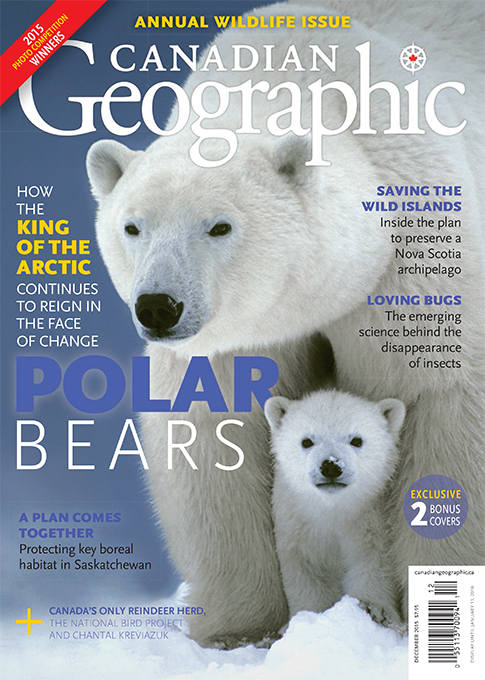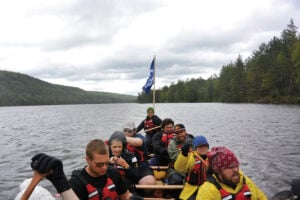
People & Culture
Kahkiihtwaam ee-pee-kiiweehtataahk: Bringing it back home again
The story of how a critically endangered Indigenous language can be saved
- 6310 words
- 26 minutes
This article is over 5 years old and may contain outdated information.
People & Culture

Lloyd Binder starts his workday like many Canadians – up at 8 a.m., eat a meal, out the door by 9 a.m.
The difference is Binder’s office is 10,000 square kilometers of Arctic tundra. His job: taking care of Canada’s only free-ranging reindeer herd. Since 2001, Binder has been general manager of the Kunnek Resource Development Corporation, better known as Canadian Reindeer (kunnek or qun’gnik means ‘reindeer’ in Inuvialuktun).
In his world, there are only two seasons: summer, when the herd grazes on Richards Island 100 kilometres north of Inuvik, and winter, when the real work of reindeer herding is done.
When I spoke to Binder over the phone from his home in Inuvik, he and his team were preparing to start moving the herd – all 4,000 of them – east from Richards Island to their winter grazing pasture on the mainland. It’s a grueling transition, requiring long days in harsh and often hazardous conditions.
“The ice is not fully formed on all bodies of water so you have to be careful. There’s usually not a lot of snow so it’s rather bumpy trail on the tundra by snowmobile. The daylight hours are very short and it can be pretty cold,” Binder says. “That’s the toughest part.”
Once the reindeer are ranged around the herders’ winter camp near Inuvik, life becomes a little easier. A typical day is spent checking on the herd’s movements, keeping an eye out for predators, and selecting and processing up to four animals per day.
Most of Binder’s customers are located in the Northwest Territories, and demand for reindeer meat fluctuates with the availability of caribou meat.
“A lot of people around here are hunters and prefer to go and hunt their own caribou,” Binder explains. “If they can do that, they’re certainly not going to buy reindeer meat, which is almost the same thing.”
Still, business has been picking up steadily over the past decade, Binder says – sometimes by as much as 10 per cent a year.
Binder and team will spend the next four to five months at their winter camp. When the snow begins to melt, it’s time to return the herd to Richards Island. That’s Binder’s favourite time of year; the days are long and there’s little to do but monitor the fawning.
“It’s basically a paid holiday to drive around on a snowmobile and watch reindeer, maybe do some ice fishing,” he laughs.
So are there people lining up to become reindeer herders?
“It’s a tougher bush life than most people are willing to put up with,” Binder says. “With reindeer herding, you’re trying to be in control of the animals or at least know where they are every day, so it’s a lot of cold weather work and long hours of skidooing and having to be creative to deal with the changing circumstances.”
Are you passionate about Canadian geography?
You can support Canadian Geographic in 3 ways:

This story is from the December 2015 Issue

People & Culture
The story of how a critically endangered Indigenous language can be saved

Wildlife
An estimated annual $175-billion business, the illegal trade in wildlife is the world’s fourth-largest criminal enterprise. It stands to radically alter the animal kingdom.

People & Culture
How a journey through the Great Lakes helped reshape my relationship with water after the loss of my father

Places
In Banff National Park, Alberta, as in protected areas across the country, managers find it difficult to balance the desire of people to experience wilderness with an imperative to conserve it